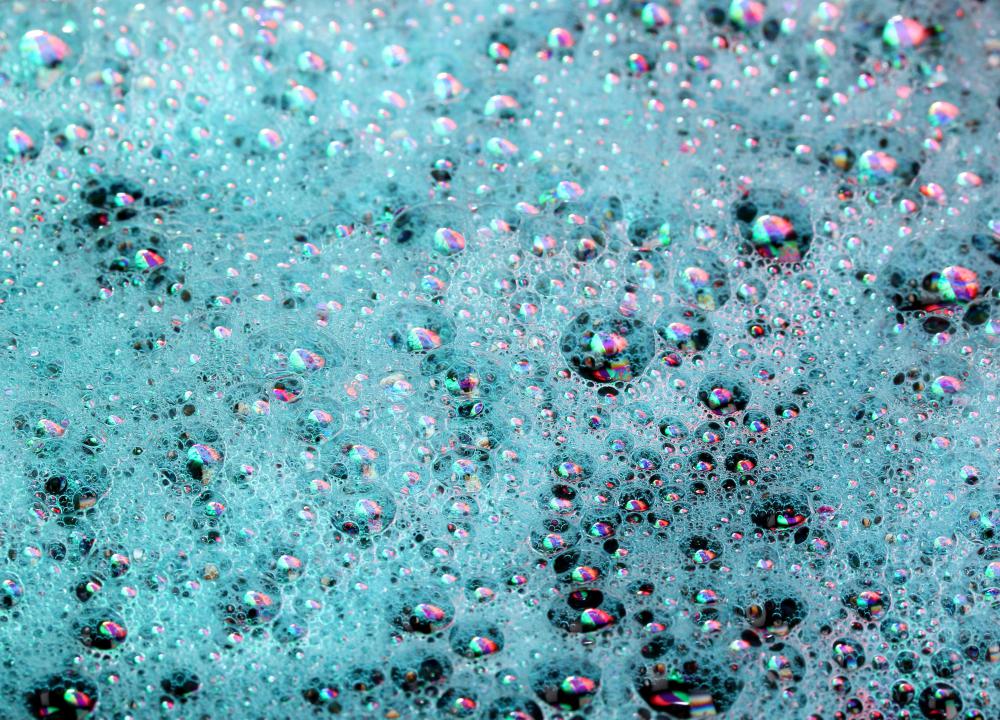At HomeQuestionsAnswered, we're committed to delivering accurate, trustworthy information. Our expert-authored content is rigorously fact-checked and sourced from credible authorities. Discover how we uphold the highest standards in providing you with reliable knowledge.
What is Felting?
Felting is a processing technique for wool which yields a non-woven fabric of unusual sturdiness, water resistance, and wind resistance. The resulting textile is known as felt or boiled wool, depending on regional terminology. It is relatively easy to practice felting at home, yielding felted fabric of good quality for an assortment of projects. Felt can also be purchased at many sewing and craft supply stores, for people who are more interested in the end result than the process.
Humans have been felting wool for centuries. Archaeological digs in Europe have produced felt garments, tents, shoes, and other products, dyed in vivid colors and extremely well made. The fact that the fabric is able to endure for centuries shows how strong a piece of felted fabric can be. Textile historians suspect that felting has been around far longer than knitting and weaving, since it is relatively easy to do in comparison with either of these techniques.

To felt wool, the wool is washed and combed to clean it and make all the fibers run in roughly the same direction. Hanks of wool are laid into large pans in layers, with the fibers of each layer running at a 90 degree angle to the layer below. Next, hot soapy water is poured over the wool, which is gently agitated. When wool gets wet, the small scales of the individual hairs open up, and agitation causes the scales to interlock with each other, forming a solid mat of material. The heat, pressure, moisture, and friction involved in felting create a solid piece of fabric from the individual fibers.

When a textile which has already been made is subjected to a similar process, it is known as fulling. Many knitters use fulling to produce distinctive garments which are also warm, snug, and water resistant. Some knitters call the process they use “felting,” but this is technically incorrect, since felting is reserved for raw wool. What they are doing is fulling, which agitates the scales in the wool to make the fabric tighter and fluffier. Fulling also results in dramatic shrinkage of knitted garments, so it is important to use a pattern designed for fulling, to prevent tragic results.
Traditionally, fulling was accomplished by beating, rolling, or walking on the fabric. This process was rather painstaking, and most modern commercially fulled fabrics use hot soapy water and agitation, just like with felting. Timing the fulling process is rather challenging, and requires a close eye. When crafters full at home, they may use a wash basin or a washing machine, and they should check the fulling progress frequently, as fabric can shrink rapidly and disastrously if it is fulled for too long. To arrest the fulling process, the garment can be plunged into cold water. Since fulling can always be continued, many crafters err on the side of caution and cold plunge garments frequently while they are fulling.
AS FEATURED ON:
AS FEATURED ON:












Discussion Comments
@irontoenail - It's funny that we seem to be going in a big circle in terms of the way that people make things. I've read articles recently about people making felt in the traditional way, by using their hands or feet, or by needle felting in order to make crafts for sale. Shoes, in particular, seem to be very popular, because you can make them to the exact right size for the customer.
@KoiwiGal - It was actually not all that long before people realized that they could achieve the same result by putting the felting supplies through a water mill, adapted for the purpose, rather than shaping the fabric by hand. Apparently they were doing this from the medieval period.
Although I guess felting in general would have been around for a lot longer than that. I mean, you only have to look at what happens to human hair if it is left without being brushed for a long period to get the gist of the process. People must have had examples of felting available to them from the moment we were intelligent enough to comprehend them.
I read a historical novel a while ago where the characters used fulling in order to make kilts. They basically washed the knitted wool in very hot water and then trod all over it for a long time in order to make the felt. The women all sang together in order to pass the time while they were doing this wet felting.
It's always interesting to see how different life could be back then. I wouldn't give a second thought to how a felted skirt was made these days and I expect it to have been in a factory. But back then it took days of labor to make a single garment.
Post your comments